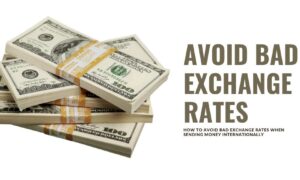Taxpayers like me and you are prone to forgetting about filing their taxes and paying them in time. Just a simple mistake like this will lead to the accumulation of your IRS tax debt. It even becomes harder to clear the tax debt when it starts earning interests, penalties, and extra fees. In case you are wondering what you can do to avoid paying a lump sum amount of debt or have found yourself in such a situation, you can use the IRS fresh start program for a new beginning. Here is all you need to know about the program and how it works.
What is the IRS Fresh Start Program?
The IRS fresh start program is one of the best ways for those in tax debt and yearning to pay back easily and start saving more. First-time tax offenders are favored by the fresh start initiative since it allows them to correct their tax mistakes. The program is designed to help anyone in tax debt pay back slowly in monthly installments which depend on how much you earn. By joining the IRS fresh start initiative, you will be able to complete your heavy tax payments within six years or less.
Who Qualifies for the IRS Fresh Start Program?
To use the IRS fresh start program to clear your tax debt, you should qualify for the program. You should also be ready to commit yourself to pay the debt within a specified period and make the payments in installments. To quality as a taxpayer, you should
l Be a first-time IRS tax offender
l Have the ability to repay the amount in 5 years maximum or less
l Be ready to file and make payment of the agreed amount in a year
l Have a debt that either fifty thousand dollars or less, or be capable of paying a certain amount back
l Agree to follow the direct payment structure when making your payments
l Be ready to commit and follow the installment agreement while ensuring that you have filed your taxes and that you are not accumulating penalties and debts.
What if the Taxes are From your Business?
If you are a business owner with a huge amount of tax debt, you can also benefit from the IRS fresh start program. This is however possible only if:
l Your business has not committed any tax offenses before
l The debt your business owes is less than twenty-five thousand dollars and your business is capable of repaying it within two years and ten months.
l Your business has paid all federal employment tax filings without fail
l Your company will be able to pay back the total tax debt within a maximum of 34 months.
l The business goal is to pay back the tax debt amount without struggling or facing challenges.
How to Apply for the IRS Fresh Start Program
Before you start asking yourself how to apply for the IRS fresh start program, ask yourself whether you follow and comply with all IRS tax guidelines and file for returns. You also need to ensure that you file all future tax returns. When applying for the program, you will need an online payment agreement tool which is only generated after you have filed your tax returns with the IRS gov and will provide you with appropriate repayment options. Alternatively, those who do not want to enroll in the program via the online application can fill and submit the IRS form 9465 which is available on IRS gov.
Any taxpayer who finds difficulty enrolling online or by sending a physical application can get help from a tax professional. A tax professional will help you choose the most favorable payment program that matches your financial ability and also advise on the relevant information to fill the IRS forms.
Which IRS Fresh Start Program Repayment Options are Available for Taxpayers?
By enrolling in the IRS gov website when filing your tax returns, you will also need a repayment option to use when clearing the tax debts. There are only three legal and satisfactory ways of making your payments without attracting more penalties or interests. Below are the repayment options available for taxpayers to choose from.
1) Extended Installment Agreement
If you have a tax debt of about fifty thousand dollars or less, you can use this payment option. If you have a tax debt that is more than fifty thousand dollars, you can start by paying the extra amount so that you can qualify for this repayment option. Taxpayers with higher amounts of debt can also be allowed to repay through this option but will undergo a longer and more complex application process. If your tax is above fifty thousand dollars, you may have to use a different process to negotiate a payment agreement with the IRS collection staff. This negotiation process will require you to provide details about your assets, income, and expenses for faster approval. This repayment option however only gives you six years to complete your debt payment without attracting more penalties and additional interest. Additionally, you will be protected from incurring more costs from fees like tax aliens, the risk of losing your assets, and wage garnishments. You can also specify the amount you will be paying every month depending on how much you earn to ensure that you do not face any financial difficulties when paying the debt.
2) Offer in Compromise
As a taxpayer, you can also select this method of tax repayment if you are struggling with tax debts. This repayment option is mostly used by those who want to pay back a lower amount than what is quoted in the tax debt by IRS. It however allows you to only pay the amount that you afford but will only be accepted if the offer you make is reasonable. You also need to be very convincing when making this application hence may need the help of a tax expert to advise on the financial tax reports that will ensure your proposal or OIC repayment option is accepted. This repayment method is not offered to those who show they can repay the whole debt amount without any challenges. You will also need to ensure that you have filed all federal tax returns and are not bankrupt. When making an application for this repayment option, you will be required to provide detailed information on your expenses, assets, income, all your bank, investment, brokage, and retirement accounts. These details are what are used to determine whether the amount you have quoted to pay is convincing.
3) Tax Lien Withdrawal
If you are a taxpayer who can clear the entire tax debt amount by making one direct debit repayment, then this is the best option for you. The IRS only issues the tax lien notice to taxpayers with tax debts that are more than ten thousand dollars. The tax debt will be withdrawn by the IRS directly from your account with your permission. You may also be given the chance to pay in direct deposit installments for 60 months if your tax debt amount is more than twenty-five thousand dollars.
Currently the non-collectible status
If you are among those taxpayers who are not able to pay back the tax debt amount, you are allowed to place the non-collectible status. This status will give you more time to plan and pay back your tax debt. Your assets will also not be retrieved within the period requested by the taxpayer.
Checking your Options
There are a few solutions you should consider when you owe taxes. Never rush to pay your tax debt before considering your survivability and all options available. You should always consider reducing the tax debt amount or any other collection solutions. Below are some of the solutions to look into.
- Refiling your returns and amending the mistakes to correct the taxes.
- Getting rid of the penalties and interests accumulated.
- Placing a proposal for auditing or reconsideration of your tax debts hence an adjustment.
- Make installment agreements with IRS collection staff to repay the tax debt in small monthly payments that favor your income and assets value.
- Ask for an OIC that will reduce the tax debt amount to the one you will repay comfortably.
- Request for an extension to pay so that you get a longer period before you are penalized for tax offenses.
- Get a temporary payment deferral that will allow you to have a grace period during tough times or when you are financially unstable.
Conclusion
The IRS fresh start initiative is designed to help taxpayers pay their tax debts back without being stressed and anxious. It provides tax offenders with a chance to select a favorable plan to comply with when paying back their tax debts. You can benefit from the IRS fresh start program as an individual or as a business owner by enrolling, selecting a suitable repayment option, and preventing any further penalties and fees. By taking quick action in clearing your tax debts, you avoid accumulating more penalties and interests. Check the qualifications and requirements for the repayment options and begin your life living a stress-free life and having a fresh start. Want to learn more? Visit Ideal Tax today!



































